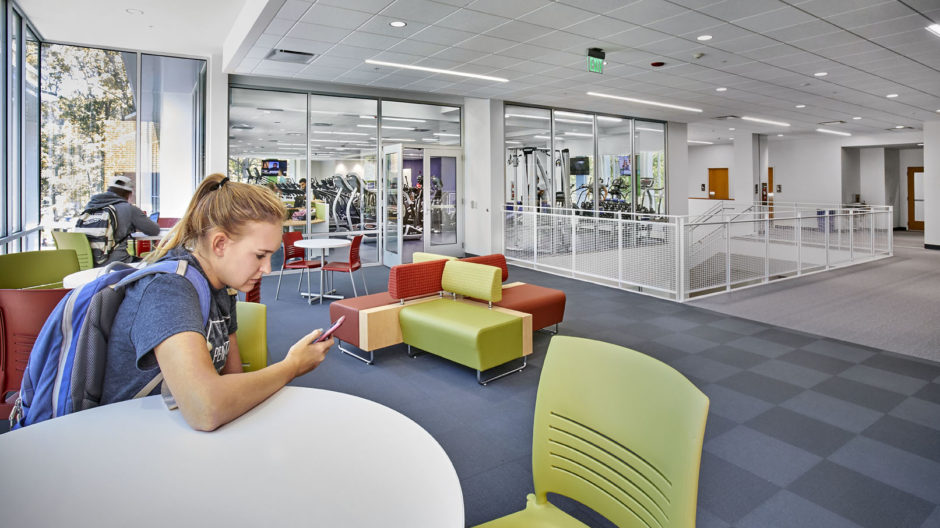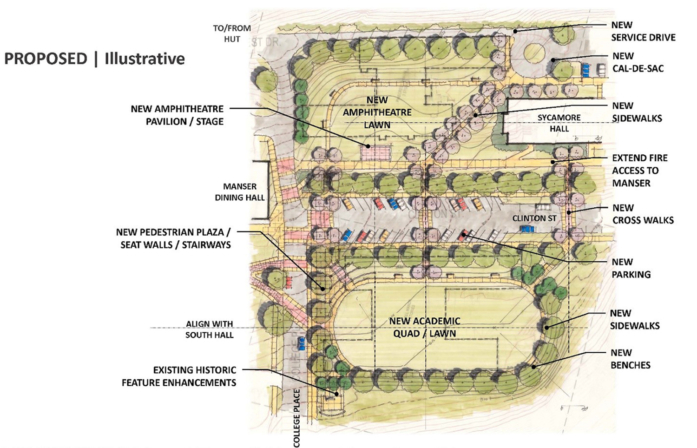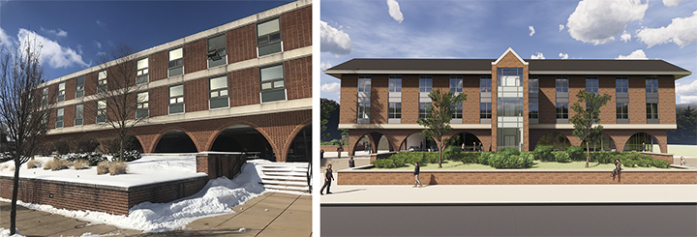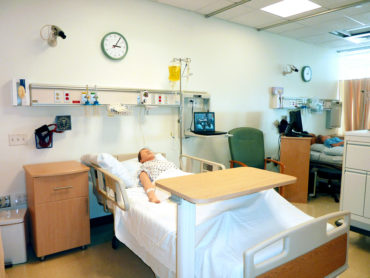Solving the Increasing Financial Challenges Facing C&U Institutions

Pre-COVID Facility Budget Concerns
It’s no secret that colleges and universities were challenged, prior to COVID-19, to formulate a plan to address increasing pressures to balance revenues and expenses during the next 5 to 10-year period (Inside Higher Ed, 2020). The data and trends prior to COVID-19 indicated that many institutions were either already or preparing to soon be confronted with impacts related to demographics pointing to a decline in number of available students due to reduced birth rates. This fact alone is undoubtedly resulting in fierce competition for students to minimize impacts to revenue generation. Compounding the demographics issue is the excess of space inventory that is the result of the building boom 15 to 20 years ago that left campuses with more space than a static or declining enrollment can support.
It’s no secret that colleges and universities were challenged, prior to COVID 19, to formulate a plan to address increasing pressures to balance revenues and expenses during the next 5 to 10-year period.
Many institutions have already been forced to defer necessary capital maintenance on older buildings and postpone contributions to capital maintenance funds for the wave of buildings that are now approaching 20 years old, in need of their first significant systems replacements. Maintenance budgets have not kept pace with the increased campus infrastructure. Facility planners have been developing plans to address these concerns within the next 5 years, even prior to COVID-19.
COVID-19 Initial Steps: What we learned from Fall 2020 reopening and operating during a pandemic

Campuses across the country have been and continue to be impacted by COVID-19. Revenues have diminished as campuses provided partial refunds for Spring 2020 semester, cancelled 2020 summer camps and programs, and experienced a downturn in Fall 2020 enrollment and on-campus housing & food service usage. There also were added expenses for necessary health and safety measures, IT and instructional support and communications logistics about new protocols
As campuses considered various options for Fall 2020 reopening - from 100% online, 100% on campus, or a hybrid model offering a combination of both, several relevant points of view were expressed by Students, Faculty, and Administrators that should influence future facilities planning. While there are certainly valid reasons to avoid campus life for health safety, most students expressed a strong desire to have the on-campus experience. Many felt so strongly that they were willing to take a “gap year” and postpone attending online until they could participate in the full, on-campus collegiate experience.
In mid-October the National Student Clearinghouse Research Center released a report documenting that freshman enrollment was down by 16%, while overall undergraduate enrollment at colleges saw a 4% drop. Graduate enrollment, however, increased this fall by 2.7 %
Faculty recognize that certain coursework is relatively easy to instruct via online format, while other curriculum such as lab work requiring hands on use of lab equipment is not possible to accomplish the same quality of education via online learning. Administrators fielded concerns from faculty, particularly those considered to be in high risk groups, about returning for in-person instructions. Questions that were previously unasked about which faculty or staff actually ‘needed’ to be on campus were now able to be asked. Institutions were able to start to evaluate whether non-student centered administrative roles need to be housed on campus, and whether some student outreach services such as counselors or advisors could work well or even better in a remote environment.
Administrators and Maintenance staff put forth extensive efforts to prepare facilities for a safe reopening. Many have learned about and implemented measures to improve HVAC system filtering, increasing levels of outside air intake, and installing portable or permanent Bipolar ionization systems. Many are implementing measures to reduce touch points by installing touch-free door hardware and touch-free plumbing fixtures. All this, along with time spent on furnishings adjustments and signage to establish social distancing, scheduled COVID cleanings and hand sanitizing stations, has created workable short-term solutions for many campuses.
Moving toward Post-COVID: Longer term strategies
After the Fall 2020 reopening, in whatever form that took at your institution, and maintaining operations through 2021 the big question remains: What now? A question that has likely been placed on the back burner as many folks had their hands full simply planning and preparing for the fall reopening. Financial administrators pouring over data based on fall enrollment revenues, will be turning their focus towards planning efforts that align spending with long term strategy. There is a strong likelihood that the financial impacts felt from COVID 19 will demand institutions implement looming cost savings measures in a more rapid manner than the 5-10 year timeline that was envisioned pre-pandemic.
Administrators will need to implement assessments of proposed projects with greater scrutiny and with an eye to making dollars spent do ‘double duty’. Projects will need to be deemed essential, either because: the campus can’t operate without them; they will save costs in the long term; or that they create revenue.
Operation Driven Opportunities
- When forced to consider cuts to campus budgets, key operations might also be helped by looking for efficiencies. Things that seemed critical before COVID, such as private faculty offices, now seem like optional items that do not drive the success of departments. Zoom conferencing has the potential to reduce conference space needs for in person meetings and no longer needs to be the driver for requiring multiple rooms that perform the same function.
- Projects that are deemed crucial to the operation of an institution might include renovations to program spaces and purchasing of updated equipment for those growing programs that are going to be key to recruiting new students.
Future Cost Savings
- Older, underutilized buildings often require significant time, effort and money to maintain. A one-time infusion of funds to demolish structures, possibly creating outdoor amenity space, provides advantages for maintenance budgets and open space assets for campus.
- Assessments of space will need to result in an identifiable action plan to reduce excess space. This is something that many institutions have put off for various reasons, however, it is now vitally important that action is taken. Campuses need to look long and hard for opportunities to consolidate building functions, and make the tough decisions to consolidate functions. This will enable campuses to demolish or repurpose extra space inventory.
- Ideally, Campuses would also study upcoming capital maintenance requirements of each building on campus simultaneous with the space study. Identifying opportunities to consolidate into buildings with fewer capital maintenance needs, and eliminating buildings projected to have more costly upkeep cost, will provide additional financial impacts to future operating cost.

Demolition of Older, Underutilized Residence Halls at Mansfield University
Daniel Greenstein, Chancellor of the Pennsylvania State System of Higher Education (PASSHE), was quoted recently in the New York Times describing the aggressive recession management strategy that PASSE has now been pursuing for 12 years to cope with changing demographics.
- Many campuses have previously implemented some measures to create more energy efficient buildings thereby reducing operating cost. A continuation of implementing energy conservation measures in any inefficient buildings that remain on campus is now even more important to address. Many institutions will further consider guaranteed energy savings contracts to achieve completion of any remaining improvements.
- Buildings whose envelopes are getting near the end of their intended lifespan may need re-roofing with insulation that meets current energy codes or installing other envelope enhancements such as energy efficient windows.
Creating Revenue
Improvements to housing and other revenue generating endeavors such as Dining and C-Store amenities are likely to become more viable projects as the demographics for college aged students continue to shrink. Renovations to residence halls where campuses would be better served in the recruitment process, and will be better able to compete for new students, can become a more immediate part of strategic planning.

Renovation of older residence hall at Mount Aloysius College: Pictured ‘before’ and rendering of the updated structure that will not only meet ADA, but also energy and water use standards while modernizing amenity spaces and resident rooms including finishes and furnishings. Before construction was undertaken, WMF conducted a comprehensive study to assess options and compared risks and benefits of renovation vs. new construction to meet campus goals, needs and budget. The College decided a renovation was the most cost effective approach.
In summary, campuses can look to meet one or more of these criteria by planning for better space utilization, exploring multi-purpose uses for existing spaces and performing assessments of existing buildings.
Reviving and developing plans for capital expenditure will need to be done with careful scrutiny of project merits. Facility administrators can continue planning for projects with some of these criteria in mind, and must do so in order to continue to serve the institutions goals of meeting the educational needs of their students in these competitive and challenging times.

